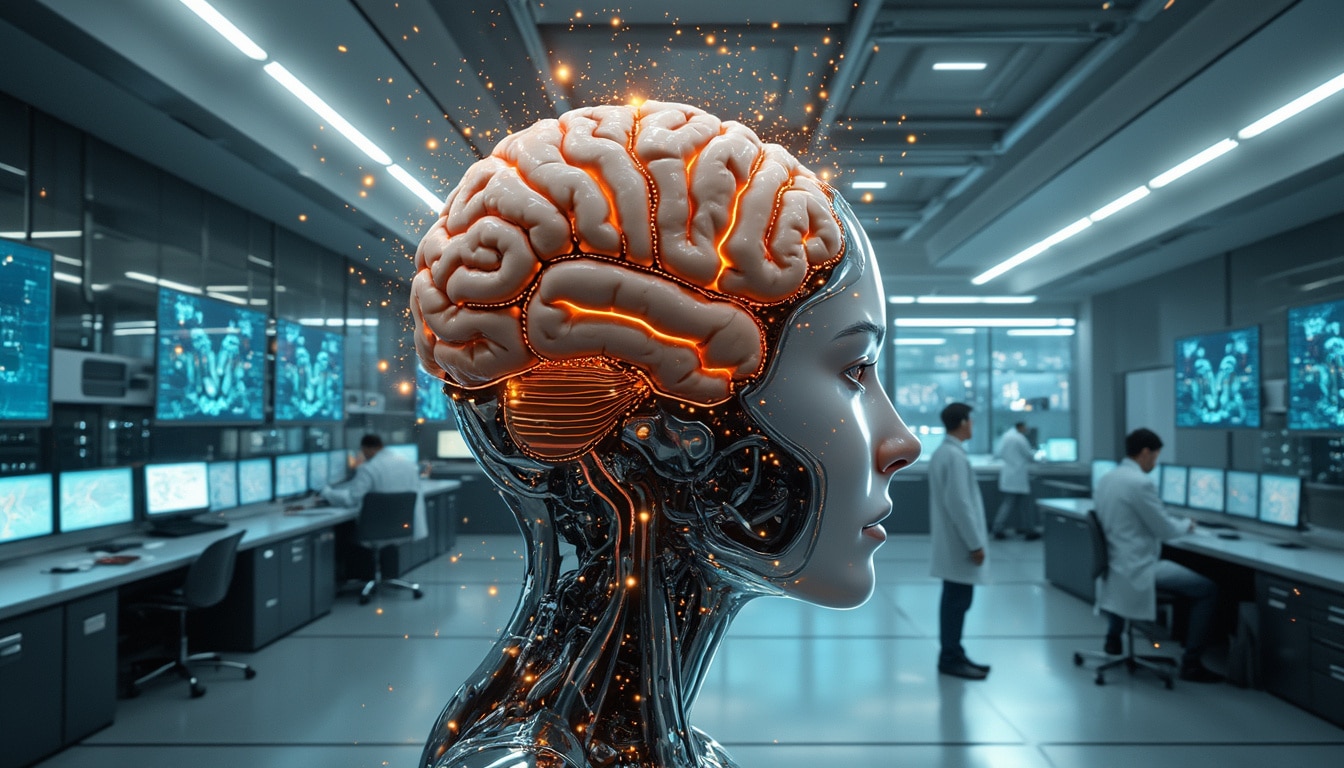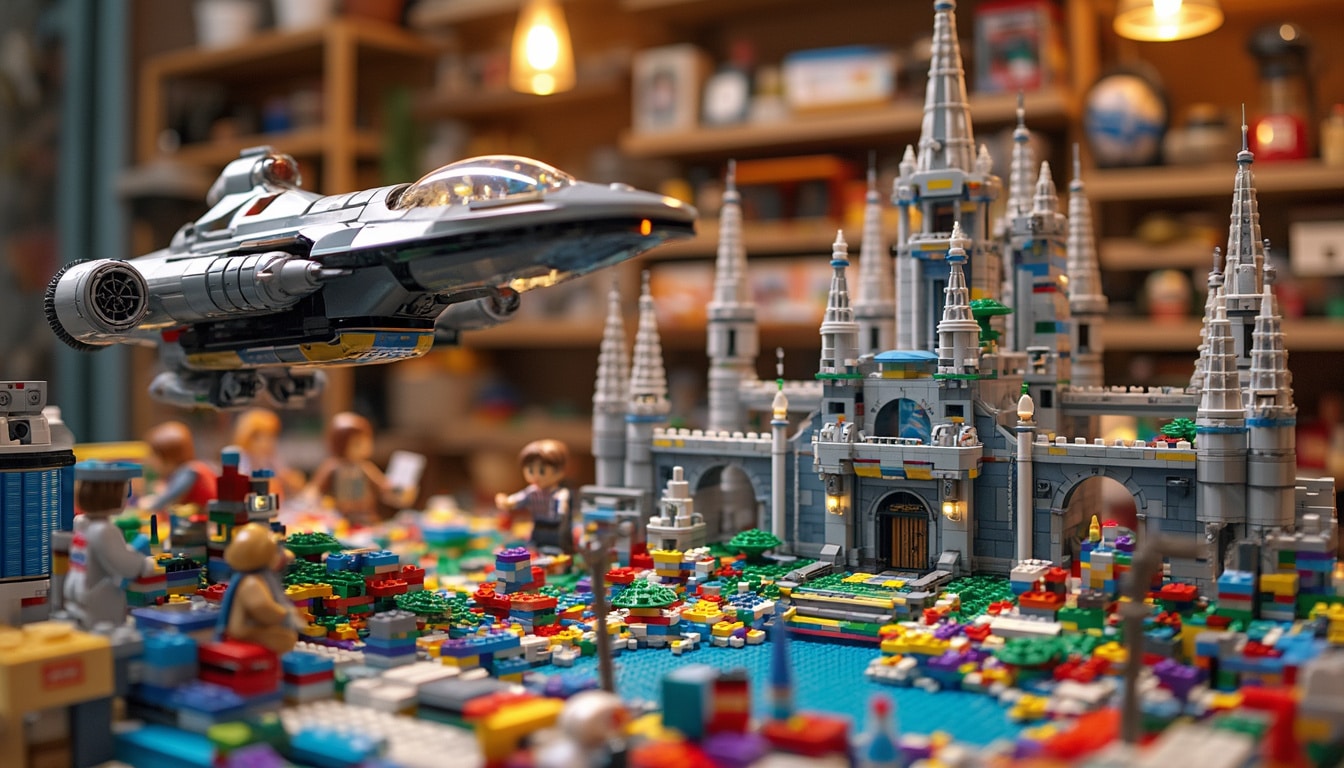« `html
Ever wondered why your brain feels like a smart bulb, while AI is more like a power-hungry monster? It’s a wild contrast between biological brilliance and digital gluttony. Let’s dive into this electrifying dilemma.
Artificial Intelligence is spreading its digital tentacles everywhere, but its energy appetite is becoming a real headache. Enter the Super-Turing AI, inspired by the human brain, promising to revolutionize the game by consuming way less power. Imagine getting more intelligence without the hefty energy bill. It’s like switching from a gas-guzzling SUV to an efficient electric car, but for your favorite tech. This breakthrough could be the light at the end of the energy tunnel, making AI smarter and greener. So, buckle up as we explore this fascinating journey towards a more sustainable AI future.
I’ve always found it crazy that my brain, with its whopping 86 billion neurons, runs smoothly on just 20 watts. Meanwhile, AIs like ChatGPT are chugging through megawatts in massive data centers, answering our deepest existential questions and creating stunning Midjourney prompts. The difference is mind-blowing.
Researchers at Texas A&M University decided to take a page out of our own playbook. They developed Super-Turing AI, an AI that processes information and memorizes it in an integrated way, much like the human brain. This means it can learn faster and consume less energy, paving the way for a new era of intelligent and eco-friendly technology.
Every time I activate an AI like ChatGPT or Gemini, I can’t help but wonder about its energy consumption in the background. We all know these current models, impressive as they are, are true energy hogs. They reside in vast data centers that guzzle gigawatts, whereas the human brain, that masterpiece of bio-engineering, operates on barely 20 watts – akin to a bedside lamp.
Thus, Suin Yi and his team launched the Super-Turing AI project at Texas A&M. Their goal? To create an AI that mimics the human brain’s efficiency without burning through the planet’s resources with every request.
Unlike traditional AIs that separate learning from memory, causing massive data transfers between components, Super-Turing AI integrates both into a single unit, just like our brains. This integration reduces information movement, cutting down energy consumption significantly.
Say goodbye to backpropagation and hello to biological learning. Most AIs today rely on backpropagation – an effective yet unnatural algorithm. Suin Yi and his team drew direct inspiration from our gray matter, incorporating mechanisms like Hebbian learning, synaptic plasticity, and temporal synchronization. These techniques, closer to the actual workings of the human brain, allow AI to learn continuously without the need for oversized data centers.
In tests, a circuit based on this new architecture enabled a drone to navigate an unknown environment without prior training. It learned on the fly, literally, performing faster, more efficiently, and with less energy than traditional AIs. The future of AI looks promising, but the environmental impact is a significant concern. Companies are increasingly caught between their drive for innovation and the harsh energy realities. Building new data centers every time? That’s definitely not sustainable.
With Super-Turing AI, Suin Yi offers an AI solution that is not only smarter but also more sustainable. Personally, I find that both genius and reassuring. What are your thoughts on this green leap in AI technology?

« `html
Table of contents
Togglethe energy dilemma of modern ai
Artificial Intelligence has revolutionized our world, from powering virtual assistants to driving autonomous vehicles. However, this technological marvel comes with a hefty energy bill. Modern AIs like ChatGPT and Gemini reside in massive data centers that gulp down gigawatts of electricity. It’s like having a digital energy vampire lurking behind every query you make. Meanwhile, our own brains manage with a mere 20 watts—about the energy consumption of a bedside lamp. This stark contrast begs the question: can we create AIs that are as energy-efficient as the human brain?
Enter Super-Turing AI, a groundbreaking innovation inspired by the very organ that powers us. Researchers at the University of Texas A&M have developed an AI that mimics the human brain’s neural processes, aiming to cut down energy consumption dramatically. Imagine an AI that doesn’t need to burn through terabytes of data every second but can operate with the elegance and efficiency of your own grey matter. This isn’t just a step forward; it’s a leap towards sustainable technology.
The significance of this development cannot be overstated. As businesses and industries increasingly rely on AI, the cumulative energy consumption poses a real threat to our planet. Innovation in creating more energy-efficient AI models is not just desirable—it’s imperative. Super-Turing AI promises to bridge the gap between high performance and low energy usage, paving the way for a future where advanced technology doesn’t come at the cost of our environment.
how super-turing ai mimics the human brain
So, how does Super-Turing AI manage to stay clever without guzzling energy like its predecessors? The secret lies in its architecture, which closely resembles the human brain’s neural network. Traditional AIs rely on a process called backpropagation, an efficient yet inherently energy-intensive algorithm that requires massive data transfers between different components. It’s like having a team of overloaded data workers constantly shuffling information back and forth.
In contrast, Super-Turing integrates learning and memory into a single cohesive unit, much like how our brains operate. This integration drastically reduces the need for data movement, slashing energy consumption. By adopting mechanisms such as Hebbian learning, synaptic plasticity, and temporal synchronization, Super-Turing AI learns in a more natural and continuous manner. This approach not only conserves energy but also enhances the AI’s ability to adapt and evolve, making it smarter over time without constant energy input.
This brain-inspired design marks a significant departure from conventional AI models. It allows Super-Turing AI to process information more efficiently, leading to quicker learning curves and more sustainable operations. The implications of this are vast, potentially revolutionizing how we deploy AI across various industries without the looming threat of exorbitant energy costs.
the benefits of integrated information processing
Integrated information processing is at the heart of what makes Super-Turing AI so revolutionary. By combining learning and memory into a unified system, this AI eliminates the need for separate data transfer mechanisms that are both time-consuming and energy-draining. Think of it as having all the ingredients for a gourmet meal in a single, efficient kitchen—no need to run back and forth for utensils or spices.
One of the standout benefits of this approach is the significant reduction in energy consumption. Without the constant shuffle of data between disparate components, Super-Turing AI operates with unprecedented efficiency. This not only lowers operational costs but also minimizes the environmental impact, aligning with the growing demand for sustainable technology.
Furthermore, integrated processing enhances the AI’s learning capabilities. By mimicking the brain’s ability to form connections and adapt continuously, Super-Turing AI can learn on the fly, much like a human navigating a new environment. This was demonstrated in a recent test where a drone powered by Super-Turing AI successfully navigated an unknown environment without prior training, learning and adapting in real-time with remarkable efficiency.
real-world applications and tests of super-turing ai
The potential applications of Super-Turing AI are vast and varied, spanning multiple industries and sectors. One of the most promising areas is autonomous navigation. As mentioned earlier, a drone equipped with Super-Turing AI was able to explore an unfamiliar environment without any pre-programmed instructions. This capability opens doors to numerous possibilities, from search and rescue missions to environmental monitoring.
Another exciting application is in the realm of robotics. Companies like SeaClear are pioneering robotic innovations for exploring ocean depths. By integrating Super-Turing AI, these robots can operate more efficiently, making real-time decisions without the constant need for energy-intensive data processing. This not only enhances their performance but also extends their operational lifespan.
Additionally, Super-Turing AI’s energy efficiency makes it an ideal candidate for smart home technologies. Imagine AI-powered devices that can learn and adapt to your habits without constantly drawing power, reducing both your energy bills and your carbon footprint. Innovations like these are already being explored, as seen in articles like AI applications transforming everyday spaces.
the future impact of energy-efficient ai on society
The introduction of energy-efficient AI like Super-Turing has the potential to reshape our society in profound ways. As more industries adopt this technology, we can expect a significant reduction in overall energy consumption associated with AI operations. This shift not only benefits the environment but also makes advanced technologies more accessible and sustainable for businesses of all sizes.
Moreover, the sustainability aspect of Super-Turing AI aligns with global efforts to combat climate change. By reducing the energy footprint of AI, we move closer to achieving carbon neutrality goals. This is particularly crucial as AI becomes increasingly integrated into critical infrastructure, healthcare, and education. Sustainable AI ensures that these advancements do not come at the expense of our planet.
The long-term implications also extend to economic growth. Energy-efficient AI can lower operational costs for companies, fostering innovation and encouraging investment in new technologies. This economic boost can drive further research and development, creating a positive feedback loop that accelerates technological progress while maintaining environmental stewardship.
In essence, Super-Turing AI represents a harmonious blend of intelligence and sustainability, promising a future where technological advancements are both smart and eco-friendly. As we continue to explore and expand the capabilities of such AIs, the potential for positive societal impact is immense, paving the way for a brighter, greener future.
exploring the broader implications of super-turing ai
Beyond immediate applications, Super-Turing AI opens up intriguing possibilities for the broader landscape of technology and society. One such implication is the democratization of AI technology. With reduced energy requirements, developing and deploying advanced AI becomes more feasible for smaller businesses and emerging markets, leveling the playing field and fostering global innovation.
Additionally, the eco-friendly nature of Super-Turing AI aligns with the growing trend of green technology. As awareness of environmental issues rises, consumers and businesses alike are prioritizing sustainability. AI that supports these values without compromising performance stands to gain widespread acceptance and integration. For instance, initiatives like Sarthe’s innovation award triumphs highlight the increasing recognition and support for environmentally conscious technological advancements.
Furthermore, the advancements in Super-Turing AI could spur new research in neuroscience and cognitive science. By closely mimicking the human brain, this AI not only benefits technology but also provides insights into how our own brains function. This could lead to breakthroughs in understanding neurological disorders, enhancing brain-computer interfaces, and even improving educational tools that adapt to individual learning styles.
The ripple effects of such technology are far-reaching. From enhancing human-computer interactions to enabling more efficient energy systems globally, the impact of Super-Turing AI extends well beyond its immediate use cases. As society continues to navigate the complexities of technological integration, innovations like Super-Turing AI serve as beacons of how we can achieve progress without sacrificing our environmental responsibilities.
embracing a sustainable future with super-turing ai
Embracing Super-Turing AI is not just about adopting a new technology; it’s about committing to a sustainable future. As we forge ahead into an era where AI becomes ubiquitous, the importance of energy-efficient solutions cannot be overstated. This AI model sets a precedent for future developments, proving that it’s possible to achieve high performance without a corresponding spike in energy consumption.
Companies and researchers are now inspired to pursue similar avenues, exploring how other aspects of technology can be optimized for sustainability. The success of Super-Turing AI serves as a testament to the innovative potential that lies at the intersection of intelligence and environmental stewardship. It’s a shining example of how we can harness technology’s power responsibly, ensuring that progress does not come at the planet’s expense.
As we move forward, the collaboration between technologists, environmentalists, and policymakers will be crucial in shaping a future where sustainable AI is the norm rather than the exception. Initiatives that support research, development, and implementation of such technologies will accelerate the transition towards a greener, smarter world. The journey towards sustainability is paved with innovations like Super-Turing AI, lighting the way for a harmonious balance between advancement and conservation.
So, the next time you interact with an AI, spare a thought for the groundbreaking work that goes into making it not just smart, but also sustainable. After all, the future of AI isn’t just about intelligence—it’s about intelligent energy use.
join the conversation on sustainable ai innovation
The emergence of Super-Turing AI is just the beginning of a broader conversation about sustainable innovation in the tech industry. As we witness these advancements, it’s essential to engage in discussions about how we can collectively steer technology towards a more sustainable and responsible path. Sharing insights, debating policies, and supporting eco-friendly tech initiatives are all part of fostering a community that values both progress and preservation.
If you’re intrigued by how AI is transforming various sectors while keeping sustainability in mind, check out this comprehensive overview on innovation shaping our future. Stay updated with the latest breakthroughs and success stories by following articles like SeaClear’s robotic innovations or astonishing AI applications in everyday life. Your participation and support can help drive the adoption of sustainable technologies, ensuring that the AI revolution benefits both humanity and the environment.
Additionally, celebrating achievements in sustainable tech, such as Sarthe’s innovation award, highlights the importance of recognizing and encouraging responsible innovation. By promoting and supporting these efforts, we can accelerate the development of technologies that are not only cutting-edge but also environmentally conscious.














